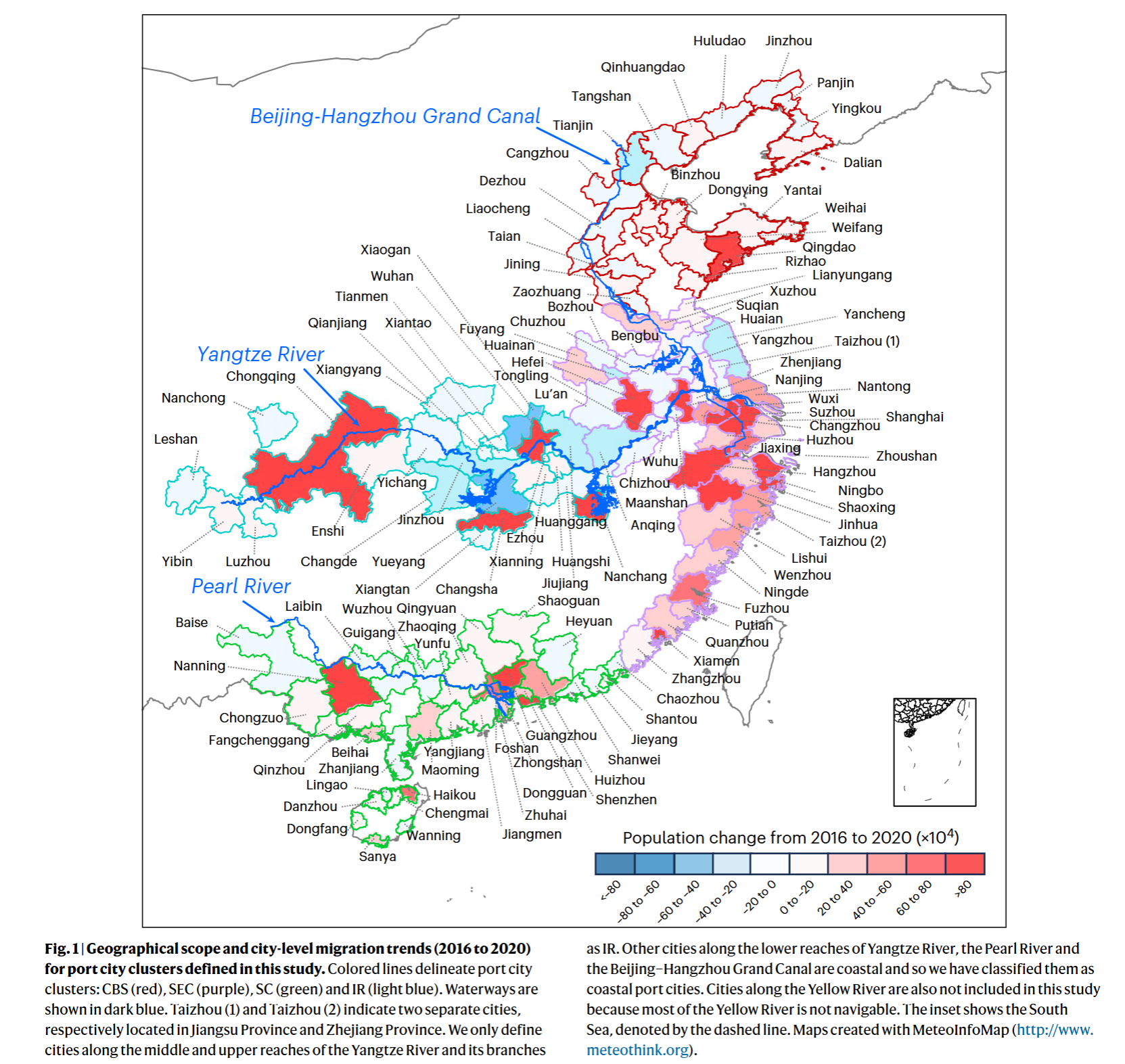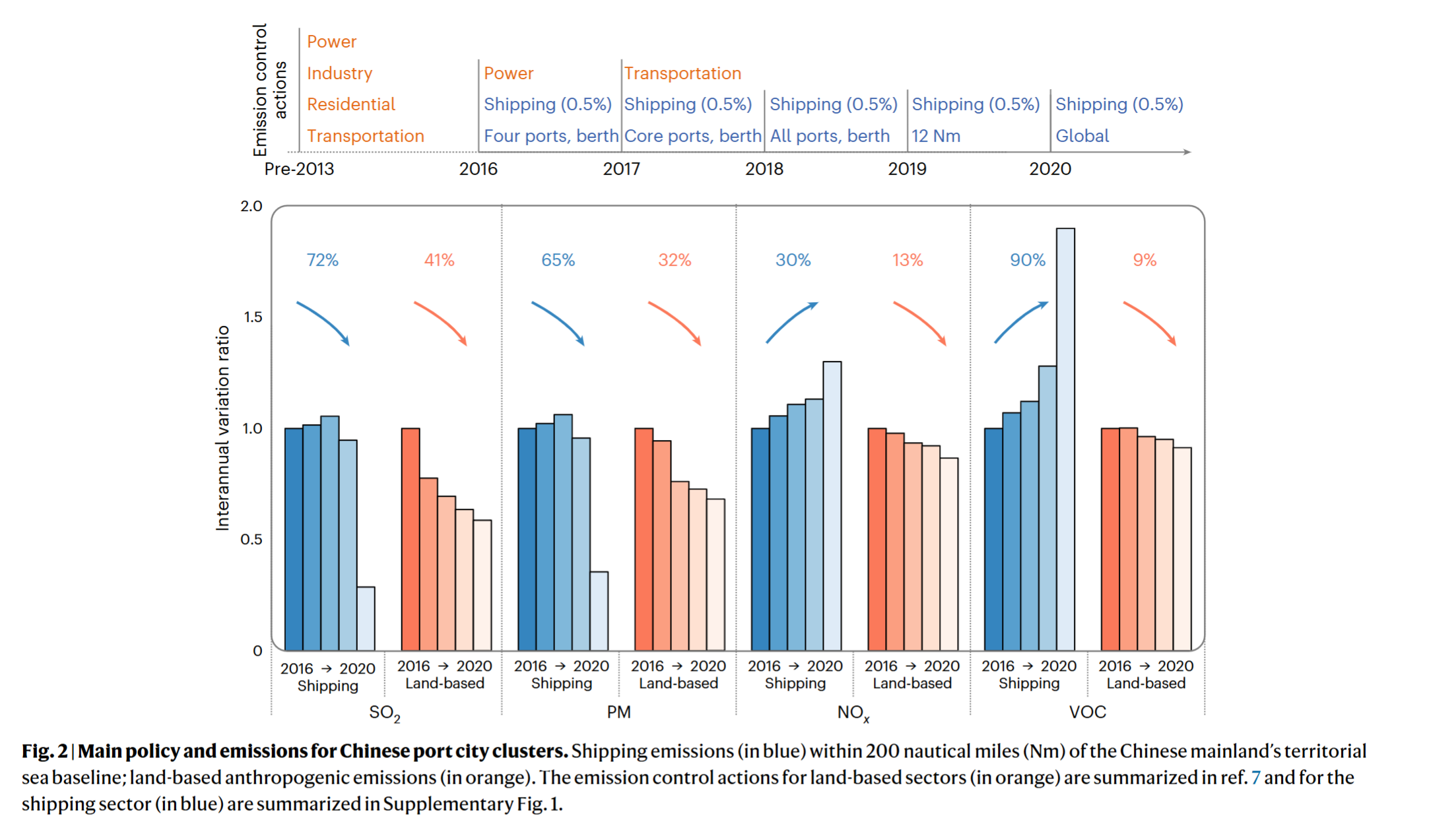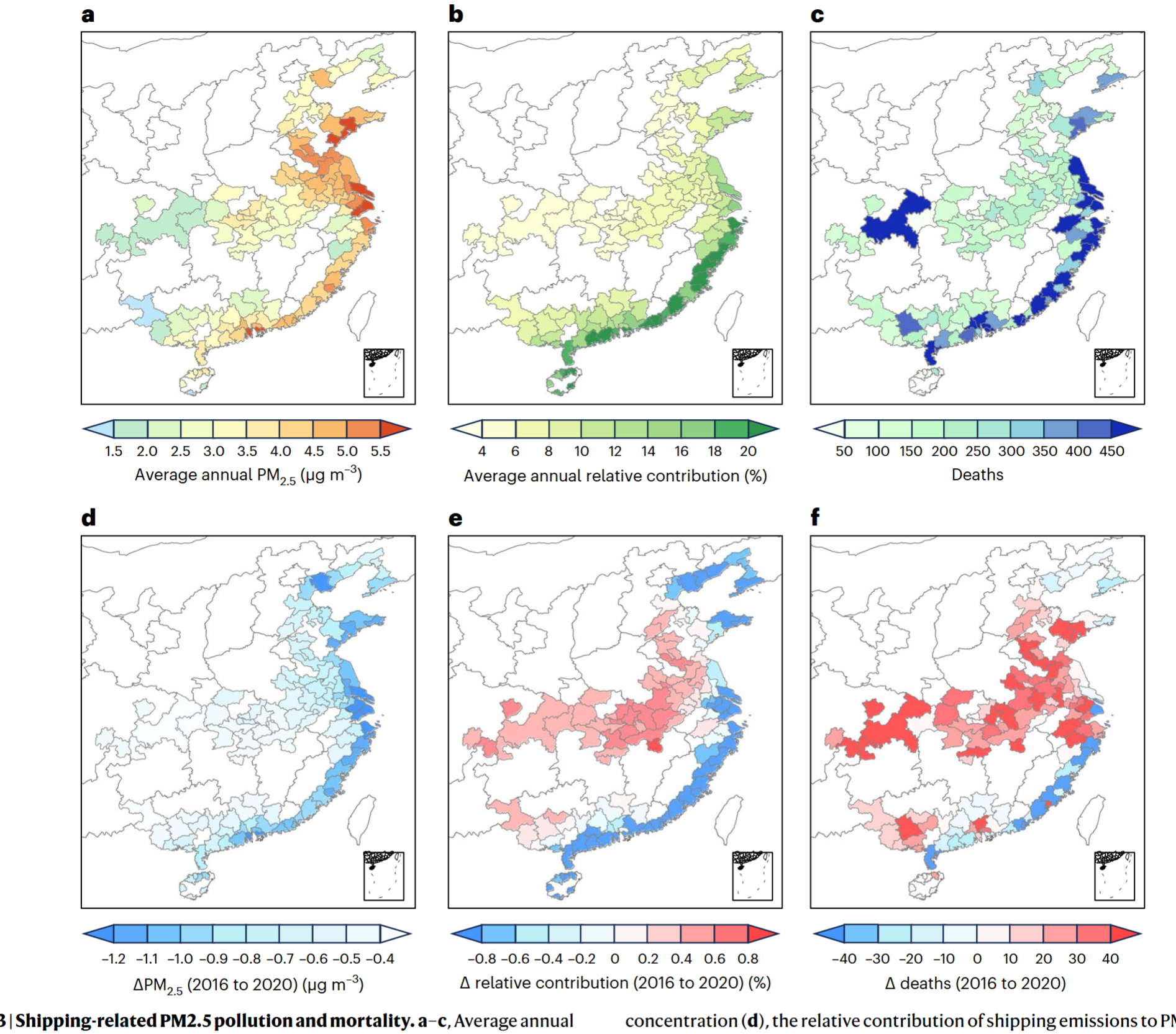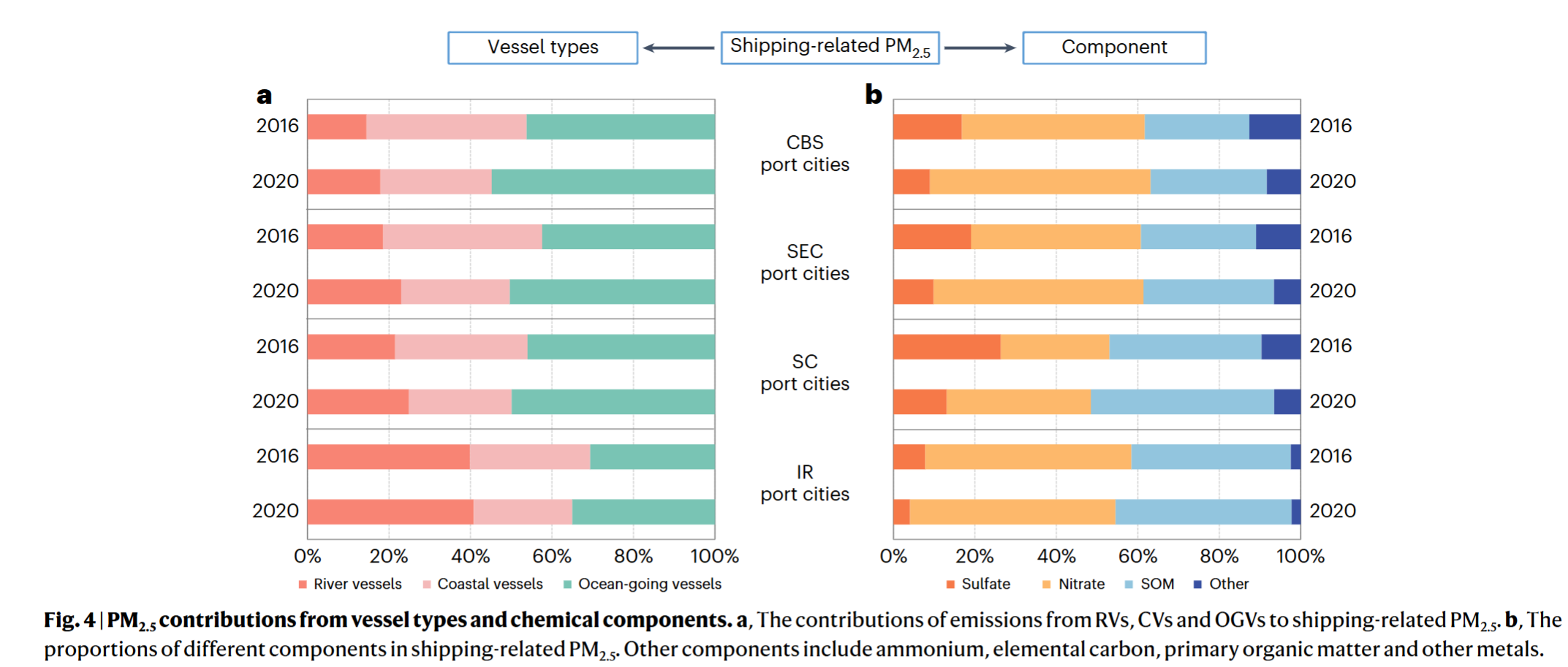Objective:
- Evaluate shipping-related PM2.5 pollution and mortalities attributable to long-term PM2.5 exposure across Chinese port cities from 2016 to 2020.
Case:
Methodology:
- Brute Force method: mortality
- Change decomposition: Pilling-up decomposition approach
Data Source
- AIS data and Shipping emission inventory model
- Weather research and forecasting (WRF) and community multiscale air quality (CMAQ)
- Population: worldpop
- Time: OSRM
Findings:
- Port cities are currently the primary destinations for population migrantion in China

- High levels of shipping-related PM2.5 concentrations were observed in coastal regions
- Shipping emissions contribute to PM2.5 pollution at relatively high levels

- Shipping sector caused 50,200 deaths associated with long-term PM2.5 exposure

- The most significant decrease in shipping-related PM2.5 was observed along the coastal region, attributable to the marine fuel regulation


Coding Reference:





